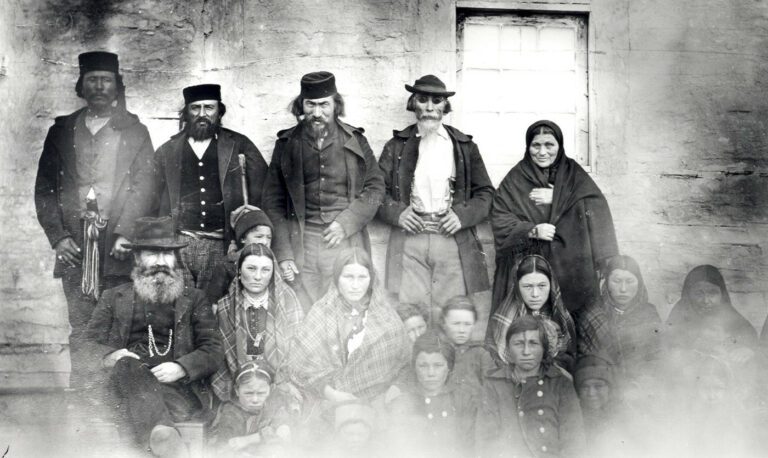Twenty-seven people died of drug overdoses in the NWT between 2009 to 2014, according to a report just issued by the territory’s Chief Coroner.
Of these deaths, due to “non-intentional poisoning by narcotics,’ four were related to fentanyl, the ultra-potent opiate that’s been causing havoc across the country; three of these involved illegally acquired fentanyl, and one involved prescribed doses of the pain killer. Since 2014, there’s been one additional fentanyl-related death in the territory.
Research for the report began last year, amid worries about fentanyl coming North.
“We had received information from the RCMP at the time that there were seizures of synthetic fentanyl pills that were starting to arrive in Yellowknife, and we had started to hear from B.C. and Alberta about the sharp increase in overdose deaths,” says Chief Public Health Officer, Dr. Andre Corriveau.
The report found that “we’re not seeing the same sharp rise in fentanyl deaths that many other provinces have been experiencing,” says Corriveau. “Ours is more of mixed bag of narcotics, but that doesn’t mean we’re immune or things couldn’t change quickly, so we have to improve our ability to monitor in more real time than we are now.”
In general, drug overdoses – from narcotics or less serious drugs like Aspirin, for example – remained fairly consistent over the period studied, with ‘drug toxicity related ER visits’ ranging from 82 to 121 per 10,000 people between 2009 and 2014.
“There was a slow increase in the number of drug overdose deaths,” says Corriveau, “But actually if you look at the narcotic overdoses, the trend was going down over the past couple of years… which was another encouraging fact for us. It’s no guarantee for the future, but provides an element of hope we’re doing something right.”
Interesting Findings
Overdose deaths were highest among females, making up 63 percent of cases, the report found. Corriveau suggests this may be due to greater first-time usage among women.
“The risk of accidental overdose is highest when you’re a new user and you don’t know how to dose yourself,” he says.
Somewhat surprisingly, the report also shows that the rate of narcotic poisoning is highest among the elderly, aged 70 and up. This, Corriveau suggests, may have less to do with addictions as with seniors having multiple prescriptions or dealing with confusion and memory problems.
The other age-group prone to overdose appears to be 15 to 19 years old. For elderly people “it’s really an accident, while in young people it’s more likely related to an addiction issue,” says Corriveau.
The rate of overdose deaths fluctuates from region to region. Fourty-eight percent of all cases were in Yellowknife, but from a per capita perspective, the Tlicho region, Beaufort Delta, and Dehcho all saw higher death rates. For hospitalization due to narcotic poisoning, Hay River has the highest per capita rates, at 2.4 cases per 10,000, followed by Sahtu, and Fort Smith.
What’s being done?
Although overdose numbers, particularly related to Fentanyl, aren’t spiking as steeply as elsewhere in Canada, “27 narcotic deaths is still too high,” says Corriveau.
“There’s not a magic bullet where you say, we’re going to do this and it’s going to solve the problem,” he adds. But steps are being taken.
Across the territory, the implementation of electronic medical records (EMR) makes it easier to track prescriptions. Roughly 80 percent of the territory’s population now has access to EMR, with Inuvik coming online recently and the Tlicho and Sahtu in the process of introducing it.
“If a patient tried to get narcotics in Hay River, then comes to Yellowknife to try to get another prescription, the physician here in Yellowknife can find out immediately that the prescription was already done in Hay River last week,” says Corriveau.
To combat Fentanyl overdoses in particular, the antidote naloxone is being made more readily available to nurses and emergency response teams, says Corriveau – although it’s still not available as a non-prescription drug in NWT pharmacies, as it is elsewhere in the country.
Finally, the series of high profile drug busts in the territory over the past two years may very well be helping. However, RCMP Sgt. Alex Lamonde warns that despite prominent busts, there’s always going to be dealers as long as there’s demand.
“Organized crime, obviously they’re into it for profit, and there’s opportunity for profit here as it is in big cities… it’s a continuous battle,” he says, adding that “fentanyl, because of the risk to public, is obviously high on that list of priorities here in Northwest Territories”







